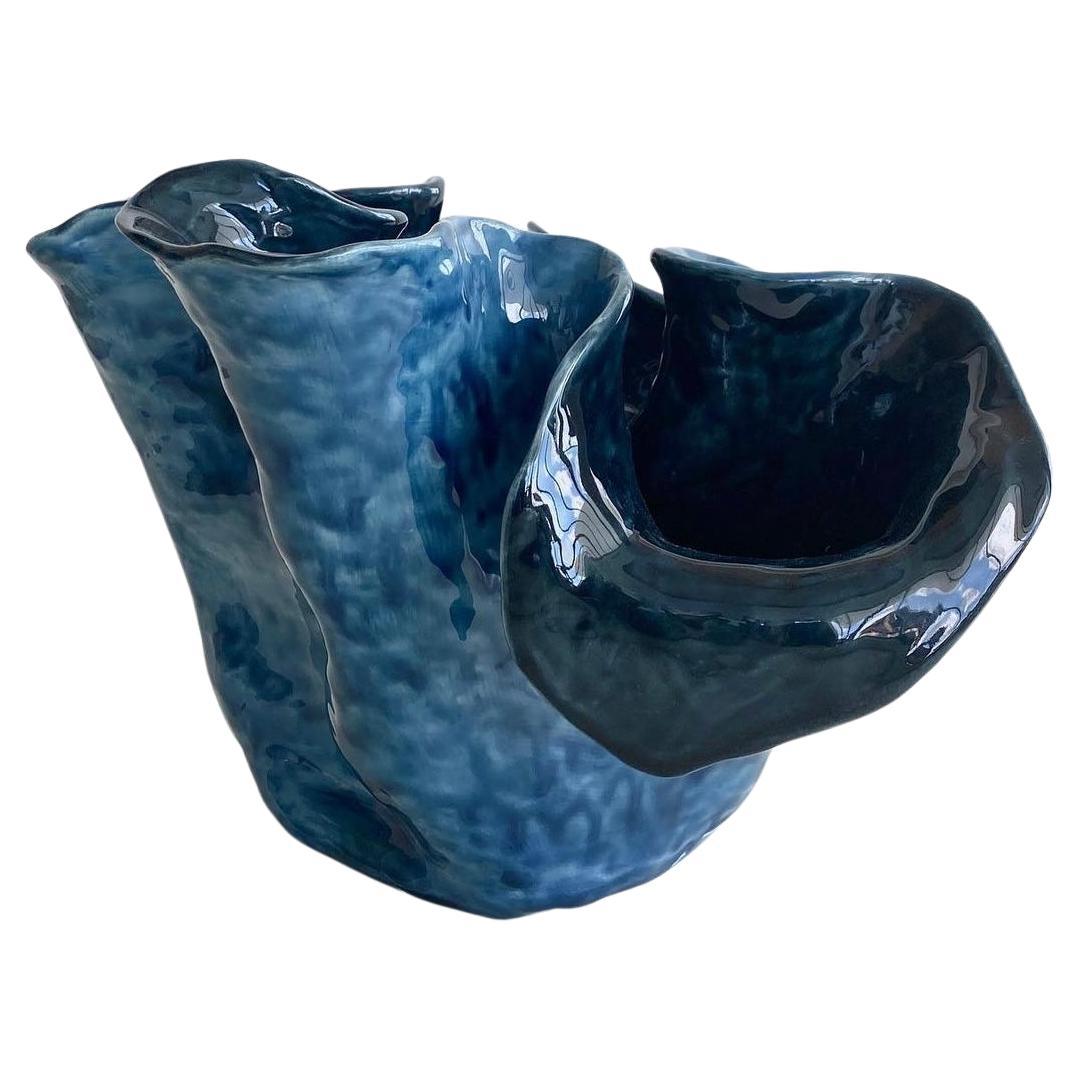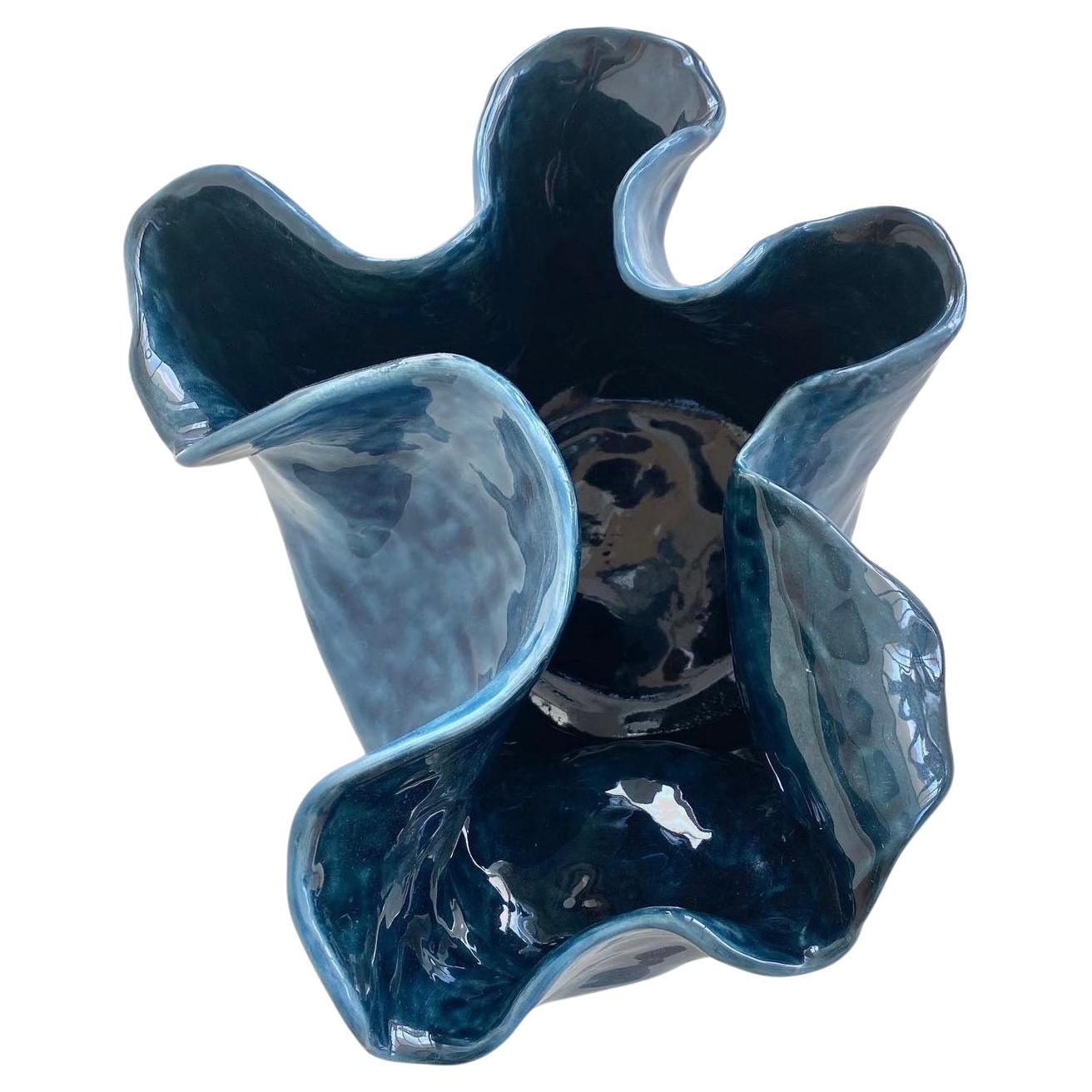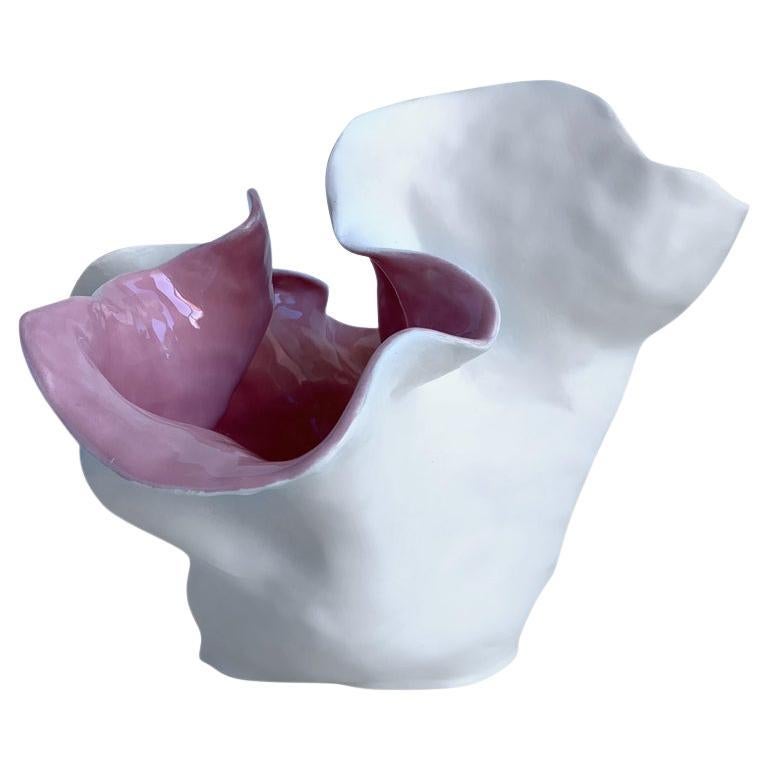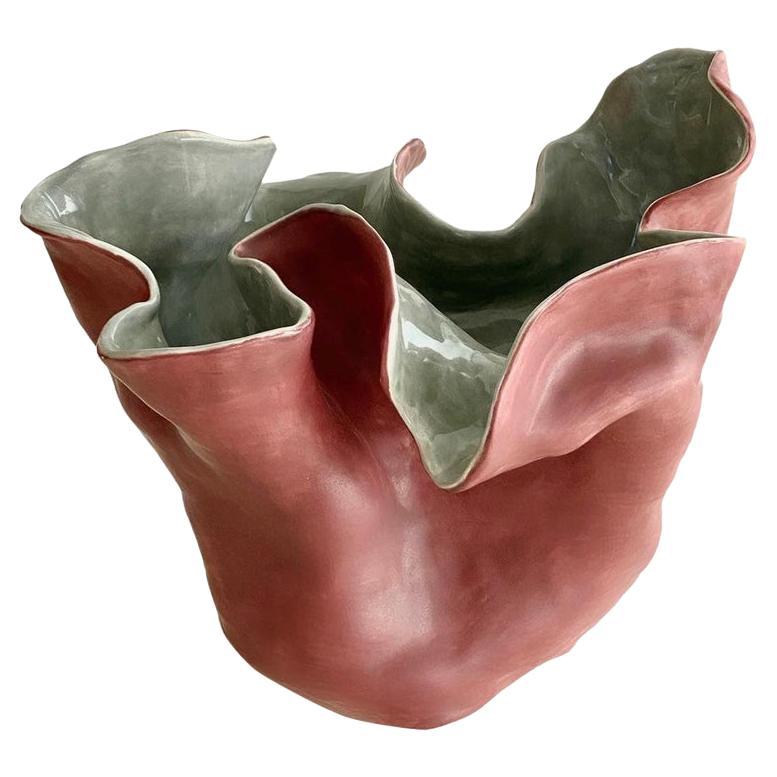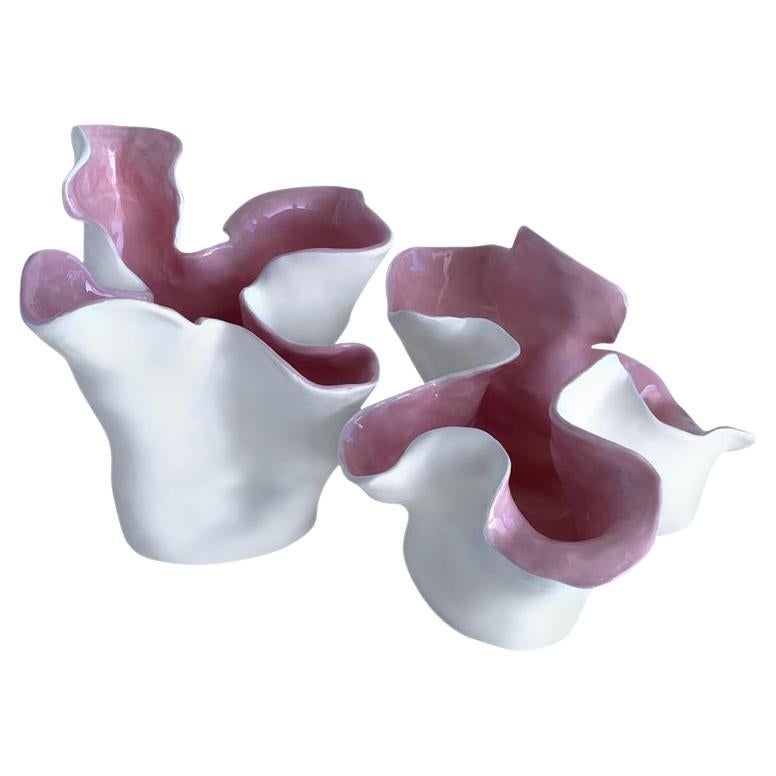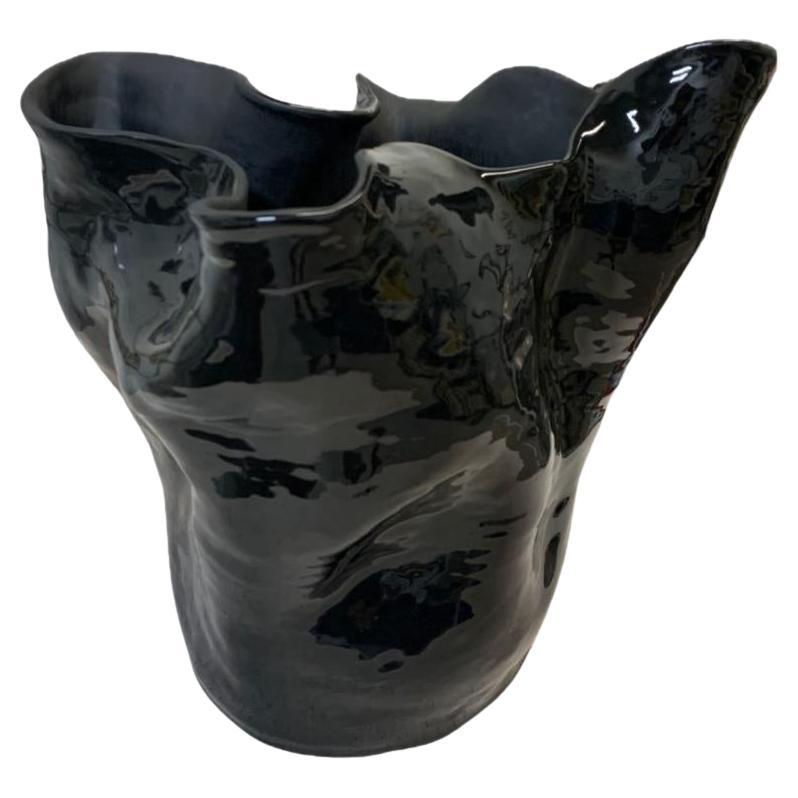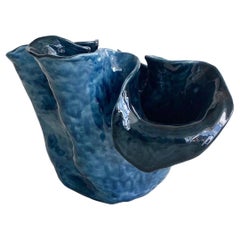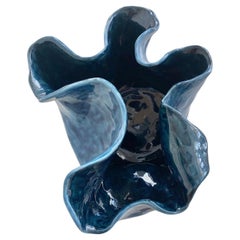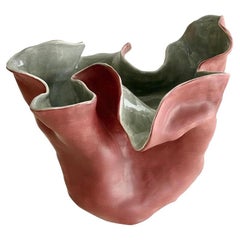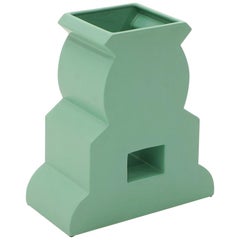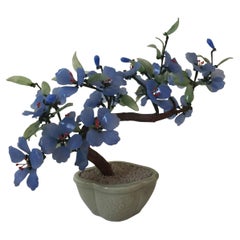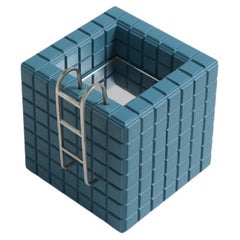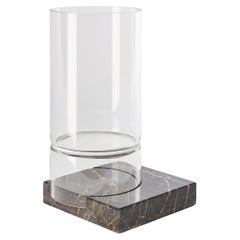Items Similar to Visceral Blue I and II Diptych. From the Visceral Series
Want more images or videos?
Request additional images or videos from the seller
1 of 12
Visceral Blue I and II Diptych. From the Visceral Series
About the Item
The Visceral series delves into the intricate relationship between the mind and the body, specifically focusing on the memories embedded within our flesh. Through her artistic exploration, she seeks to capture the essence of universal emotions and thoughts that every human being experiences throughout their journey in life. The human body serves as a vessel for our experiences, storing memories and emotions within its very fabric. These memories, both joyous and painful, shape our identities and influence our perceptions of the world. By delving into the memory of the flesh, she aims to unravel the complex tapestry of human existence. Each piece in the Visceral series is a reflection of the human condition, exploring themes of love, loss, joy, fear, and everything in between. She divings into these universal emotions, she hopes to create a sense of connection and empathy among viewers, reminding them of their shared humanity. Ultimately, her goal with the Visceral series is to create a visual narrative that speaks to the depths of the human experience. By exploring the memory of the flesh, she is to provoke introspection, reflection, and a deeper understanding of ourselves and others.
Magda Von Hanau creates rare visual poems that evoke a sense of magic. Her signature style turns classical into contemporary while playing with both form and architecture. The artist's aesthetic hints at her own personality, bold, colorful, and dramatic with unmatched attention to detail. The timeless elegance within each image Magda creates gives rise to a new kind of powerful visual storytelling.
Clay and glass glaze
Overall size: 11 in H x 32 in W x 12 in D
Individual size:
Visceral Blue, 2022
Dimensions: 11 in H x 16 in W x 11.5 in D
Visceral Blue II, 2022
Dimensions: 9 in H x 16 in W x 12 in D
- Creator:Magda Von Hanau (Artist)
- Dimensions:Height: 11 in (27.94 cm)Width: 32 in (81.28 cm)Depth: 12 in (30.48 cm)
- Sold As:Set of 2
- Style:Minimalist (In the Style Of)
- Materials and Techniques:
- Place of Origin:
- Period:
- Date of Manufacture:2022
- Condition:Wear consistent with age and use.
- Seller Location:Miami Beach, FL
- Reference Number:1stDibs: LU3081341225322
Magda Von Hanau
Brazilian-born Visual Artist Magda von Hanau is no stranger to the camera, her successful modeling and television career in Europe set the stage for her true passion for fine art and photography. Magda creates rare visual poems that evoke a sense of magic. Her signature style turns classical into contemporary while playing with both form and architecture. The artist's aesthetic hints at her own personality, bold, colorful and dramatic with unmatched attention to detail. The timeless elegance within each image Magda creates, gives rise to a new kind of powerful visual storytelling.
About the Seller
5.0
Vetted Professional Seller
Every seller passes strict standards for authenticity and reliability
Established in 2000
1stDibs seller since 2017
32 sales on 1stDibs
Typical response time: 3 hours
- ShippingRetrieving quote...Shipping from: Miami Beach, FL
- Return Policy
Authenticity Guarantee
In the unlikely event there’s an issue with an item’s authenticity, contact us within 1 year for a full refund. DetailsMoney-Back Guarantee
If your item is not as described, is damaged in transit, or does not arrive, contact us within 7 days for a full refund. Details24-Hour Cancellation
You have a 24-hour grace period in which to reconsider your purchase, with no questions asked.Vetted Professional Sellers
Our world-class sellers must adhere to strict standards for service and quality, maintaining the integrity of our listings.Price-Match Guarantee
If you find that a seller listed the same item for a lower price elsewhere, we’ll match it.Trusted Global Delivery
Our best-in-class carrier network provides specialized shipping options worldwide, including custom delivery.More From This Seller
View AllVisceral Blue II. From the Visceral Series.
By Magda Von Hanau
Located in Miami Beach, FL
The Visceral series delves into the intricate relationship between the mind and the body, specifically focusing on the memories embedded within our flesh. Through her artistic explor...
Category
2010s German Minimalist Vases
Materials
Ceramic, Art Glass, Clay
Visceral Blue. From the Visceral Series
By Magda Von Hanau
Located in Miami Beach, FL
The Visceral series delves into the intricate relationship between the mind and the body, specifically focusing on the memories embedded within our flesh. Through her artistic explor...
Category
2010s German Minimalist Vases
Materials
Ceramic, Clay, Art Glass
Visceral Blush II, From the series Visceral
By Magda Von Hanau
Located in Miami Beach, FL
The Visceral series delves into the intricate relationship between the mind and the body, specifically focusing on the memories embedded within our flesh. Through her artistic explor...
Category
2010s German Minimalist Vases
Materials
Ceramic, Clay, Art Glass
Visceral II, Red and grey. From the series Visceral
By Magda Von Hanau
Located in Miami Beach, FL
The Visceral series delves into the intricate relationship between the mind and the body, specifically focusing on the memories embedded within our flesh. Through her artistic explor...
Category
2010s German Minimalist Vases
Materials
Ceramic, Clay, Art Glass
Set of Visceral Blush I and II. From the Visceral series
By Magda Von Hanau
Located in Miami Beach, FL
The Visceral series delves into the intricate relationship between the mind and the body, specifically focusing on the memories embedded within our flesh. Through her artistic explor...
Category
2010s German Minimalist Vases
Materials
Ceramic, Clay, Art Glass
Nero II. From the Visceral Series.
By Magda Von Hanau
Located in Miami Beach, FL
The Visceral series delves into the intricate relationship between the mind and the body, specifically focusing on the memories embedded within our flesh. Through her artistic explor...
Category
2010s German Minimalist Vases
Materials
Ceramic, Clay, Art Glass
You May Also Like
Ettore Sottsass Le Connessioni Vase from the Ruins Series by Bitossi Italy, 1992
By Ettore Sottsass, Bitossi
Located in Kansas City, MO
Le Connessioni vase from the Ruins series by Ettore and made by Bitossi for Design Gallery Milano, Italy, 1992. Glazed stoneware. Signed to underside 'Ettore Sottsass 1992 3/9 Bitoss...
Category
1990s Italian Post-Modern Vases
Materials
Stoneware
Bonsai Blue 1980, Glass and Ceramic
Located in Ciudad Autónoma Buenos Aires, C
We have specialized in the sale of Art Deco and Art Nouveau and Vintage styles since 1982. If you have any questions we are at your disposal.
Pushing the button that reads 'View All From Seller'. And you can see more objects to the style for sale.
Why are there so many antiques in Argentina?
In the 1880 – 1940 there was a grate wave of immigration encouraged by the periods of war that were taking place.
1st World War took place between 1914 and 1918
2nd World War took place between 1939 and 1945
The immigrants options were New York or Buenos Aires. Tickets were cheap and in Buenos Aires they were welcomed with open arms, as it was a country where everything was still to be done.
Argentina was the country of new opportunities, labour was needed and religious freedom was assured, in many cases the of the family travel first until they were settled and then the rest of the family members join them.
In the immigrant museum “Ellis Island Immigrant Building” in New York you can se the promotional posters of the boats that would take them to a new life.
Between the years 1895 and 1896, Argentina had the highest DGP (gross domestic product) per capita in the world according to the Maddison Historical Statistics index, this situation arose due to the large amount of food being exported to European countries, which were at war.
The Argentinean ships left the port of Buenos Aires with food, but they returned with furniture, clothes and construction elements, (it´s common to see this the old buildings of the historic neighbourhood of San Telmo, the beams with the inscription “Made in England)”, as well as many markets that were built in Buenos Aires, such us the San Telmo Market, whose structure was brought by ship and afterwards assembled in 900 Defensa Street.
With the great influence of European immigrants living in the country, the children of the upper classes travelled to study in France, resulting in the inauguration of “La Maison Argentinienne”, on 27th of June 1928, in the international city of Paris, which hosted many Argentinians that were studying in Frace.
It´s the fourth house to be built after France, Canada and Belgium, being the first Spanish-speaking one. Still in place today (17 Bd Jourdan, 75014, Paris, France). Many of the children of these wealthy families who attended international art exhibitions, museums and art courses abroad, took a keen interest in the European style. This is why Buenos Aires was at the time referred as “The Paris of South America”.
Between the years 1890 and 1920 more than a hundred Palaces were built on Alvear Avenue the most exclusive avenue in Buenos Aires. Today some of these palaces have been transformed into museums, hotels and embassies.
In the year 1936, the Kavanagh building was inaugurated, it was the tallest reinforced concrete building in South America.
During 1994 the American Society of Civil Engineers distinguished it as an “international engineering milestone”, and it´s now considered a World Heritage of Modern Architecture.
At the time was common to hire foreign architects such as Le Corbusier, who visited Buenos Aires/Argentina in 1929 and in 1948 he drew up the blueprints for a house built in La Plata City (which was declared a World Heritage Site).
In 1947, the Hungarian architect Marcelo Breuer designed “Parador Ariston” in the seaside city of Mar del Plata. After an Argentinean student at Harvard University convinced him to come to Argentina. He worked on an urban development project in the Casa Amarilla, area of La Boca.
The Ukrainian architect, Vladimiro Acosta, arrives in Argentina in 1928 and worked as an architect until que moved to Brazil.
Antonio Bonet, a Spanish architect who worked with Le Corbusier in Paris, arrives in Argentina in 1937, where he carried out several architectural works and in 1938 designs the well-known BFK chair.
Andres Kálnay, of Hungarian origin, made around 120 architectural masterpieces, among which the former Munich brewery stands out, he even made the furniture’s design.
The German architect, Walter Gropius, director of the Bauhaus, lived in Argentina, where he wrote articles for “Sur” magazine and founded in Buenos Aires, an architectural firm with Franz Möller, who was also an architect, where he built two houses.
At the same time several famous designers decided to immigrate to Argentina, among them we can find the well-known French designer, Jean-Michel Frank, who arrived in the country in 1940 and also worked for the Rockefeller family.
Special pieces were made, which were sold exclusively in the country, such as the well-known German company “WMF”, who sold their products by catalogue, which were chosen by the ladies of High Society in the list of wedding gifts, as well as the pieces designed by Christofle.
The Swiss sculptor Alberto Giacometti, made special pieces for Argentinean mansions.
In 1904 the first Jansen branch outside Paris was established in Buenos Aires, as the Argentinean clientele demanded a large amount of furniture, from the end of the 19th Century to the mid-20th Century.
In 1970, the brand Rigolleau Argentina made pieces authorised by Lalique.
The brands Maple and Thompson also set up shop in the country.
The French plastic artist, Marcel Duchamp moved to Argentina in 1918-1919.
Glass signed Gallé, Charder, Leverre, Schneider, Muller and other French firms. They were bought in flower shops and were given to ladies with beautiful floral arrangements.
Some furniture manufacturers travelled to international fairs and bough the patterns to produce the furniture in Argentina, such as the furniture firm Englander and Bonta, who bought the patterns ins Italy.
It is worth mentioning that in Argentina we have the largest Community of Italians outside...
Category
Vintage 1980s Japanese Mid-Century Modern Planters, Cachepots and Jardin...
Materials
Art Glass, Ceramic
Pool Series, Mirror and PLA Blue Sculpture N1
By Luiz Costa e Rodrigo Irffi
Located in Santa Edwiges, MG
SCULPTURE SERIES POOL
“Nothing has a connection, everything is just a reflection.”
Millôr Fernandes
The imagination drifting from the unimaginable, the playful universe of illusio...
Category
2010s Brazilian Minimalist Figurative Sculptures
Materials
Stainless Steel
Segno Vase II, Giorgio Bonaguro
By Giorgio Bonaguro
Located in Geneve, CH
Segno vase II - Giorgio Bonaguro
Dimensions: D 18 x W 18 x H 15 cm.
Materials: emperador dark marble, glass.
A collection that was born from the desire to recover marble processing waste: small portions of slabs with different thickness, otherwise unused, now become an elegant and precious base for small objects.
Each element is characterized by a strong graphic sign, engraved in the stone, which acts as a guide to insert the borosilicate glass element which, according to diameters and heights, becomes a vase for flowers, a vase for plants...
Category
2010s Italian Modern Vases
Materials
Marble
$685 / item
Vase II by Jonathan Hansen
Located in Geneve, CH
Vase II by Jonathan Hansen
12 Editions + 1 AP
Dimensions: 35 x 37 x H 102 cm
Materials: Calacatta Marble
SERIES I CAPTUM BIOMORFE is a group of...
Category
2010s Italian Modern Vases
Materials
Marble
$27,931 / item
Blue and Green Venus Vase by Elyse Graham
Located in Geneve, CH
Blue and green venus vase by Elyse Graham
Dimensions: W 14 x D 14 x H 38 cm
Materials: Plaster, resin
Molded, dyed, and finished by Hand in LA. Customization
Available.
All piec...
Category
2010s American Post-Modern Vases
Materials
Resin, Plaster
$1,015 / item
Recently Viewed
View AllMore Ways To Browse
Brazil Tapestry
Runway Furniture
Theater Fixture
Mid Century Maple Dining Chairs
Minimalist Black Dining Table
Round Carved Side Table
Sculptural Black Side Table
Splat Back
Used Leather Couch And Chair
Vintage Dining Chair Set Of 4
70s Table Lamp
Antique Silver 900
Art Deco Metal Chrome
Blue Sconce Modern
Cocktail Couch
Gilded Carved Mirror
Gilt Frame American
Mexican Architect
